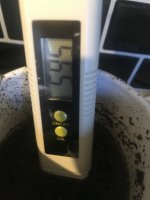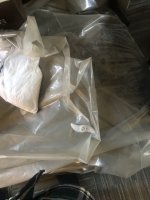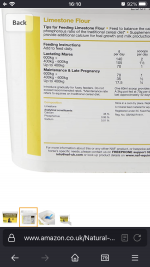Bio boy
Active member
I have been grinding and smashing now for the whole day and I have 4 cups of flour if 24 needed
bloody hell is the ag lime in bnq the same stuff ?
what els can I use I’m not even going to Finnish grinding this for my soil before I harvest at this rate and no flour for sale locally or online all shells
or this stil the dolomite shit ??
NAF Limestone Flour for Horses, 3KG https://amzn.eu/d/1OqzyrW
bloody hell is the ag lime in bnq the same stuff ?
what els can I use I’m not even going to Finnish grinding this for my soil before I harvest at this rate and no flour for sale locally or online all shells
or this stil the dolomite shit ??
NAF Limestone Flour for Horses, 3KG https://amzn.eu/d/1OqzyrW
Last edited:







